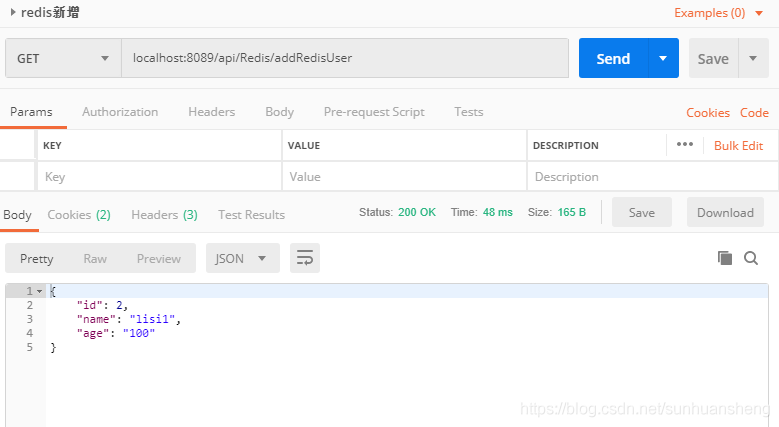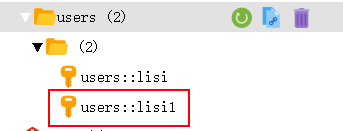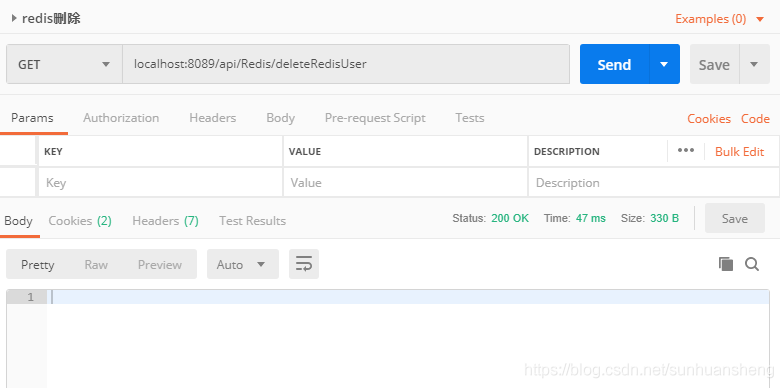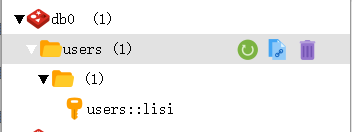1.Maven加载需要的包
<dependency>
<groupId>mysql</groupId>
<artifactId>mysql-connector-java</artifactId>
<scope>runtime</scope>
</dependency>
<dependency>
<groupId>org.springframework.boot</groupId>
<artifactId>spring-boot-starter-test</artifactId>
<scope>test</scope>
</dependency>
<dependency>
<groupId>com.alibaba</groupId>
<artifactId>fastjson</artifactId>
<version>1.2.33</version>
</dependency>
<!--热部署的jar包 ,对redis序列化有影响-->
<!--<dependency>-->
<!--<groupId>org.springframework.boot</groupId>-->
<!--<artifactId>spring-boot-devtools</artifactId>-->
<!--</dependency>-->
<dependency>
<groupId>com.auth0</groupId>
<artifactId>java-jwt</artifactId>
<version>3.3.0</version>
</dependency>
<dependency>
<groupId>org.springframework.boot</groupId>
<artifactId>spring-boot-starter-aop</artifactId>
</dependency>
<dependency>
<groupId>org.springframework.boot</groupId>
<artifactId>spring-boot-starter-data-redis</artifactId>
<version>1.4.7.RELEASE</version>
</dependency>
<!--jpa的jar包 ,操作数据库的-->
<dependency>
<groupId>org.springframework.boot</groupId>
<artifactId>spring-boot-starter-data-jpa</artifactId>
</dependency>
<!-- https://mvnrepository.com/artifact/com.google.code.gson/gson -->
<dependency>
<groupId>com.google.code.gson</groupId>
<artifactId>gson</artifactId>
<version>2.8.0</version>
</dependency>
2.Redis配置
package com.hpm.blog.config;
import com.fasterxml.jackson.annotation.JsonAutoDetect;
import com.fasterxml.jackson.annotation.PropertyAccessor;
import com.fasterxml.jackson.databind.ObjectMapper;
import org.springframework.cache.CacheManager;
import org.springframework.cache.annotation.CachingConfigurerSupport;
import org.springframework.cache.annotation.EnableCaching;
import org.springframework.cache.interceptor.KeyGenerator;
import org.springframework.context.annotation.Bean;
import org.springframework.context.annotation.Configuration;
import org.springframework.data.redis.cache.RedisCacheManager;
import org.springframework.data.redis.connection.RedisConnectionFactory;
import org.springframework.data.redis.core.RedisTemplate;
import org.springframework.data.redis.core.StringRedisTemplate;
import org.springframework.data.redis.serializer.Jackson2JsonRedisSerializer;
import java.lang.reflect.Method;
@Configuration
@EnableCaching
public class RedisConfig extends CachingConfigurerSupport{
@Bean
public KeyGenerator wiselyKeyGenerator(){
return new KeyGenerator() {
@Override
public Object generate(Object target, Method method, Object... params) {
StringBuilder sb = new StringBuilder();
sb.append(target.getClass().getName());
sb.append(method.getName());
for (Object obj : params) {
sb.append(obj.toString());
}
return sb.toString();
}
};
}
@Bean
public CacheManager cacheManager(
@SuppressWarnings("rawtypes") RedisConnectionFactory connectionFactory) {
RedisCacheManager rm = RedisCacheManager.create(connectionFactory);
return rm;
}
@Bean
public RedisTemplate<String, String> redisTemplate(
RedisConnectionFactory factory) {
StringRedisTemplate template = new StringRedisTemplate(factory);
Jackson2JsonRedisSerializer jackson2JsonRedisSerializer = new Jackson2JsonRedisSerializer(Object.class);
ObjectMapper om = new ObjectMapper();
om.setVisibility(PropertyAccessor.ALL, JsonAutoDetect.Visibility.ANY);
om.enableDefaultTyping(ObjectMapper.DefaultTyping.NON_FINAL);
jackson2JsonRedisSerializer.setObjectMapper(om);
template.setValueSerializer(jackson2JsonRedisSerializer);
template.afterPropertiesSet();
return template;
}
}
3.application.yml,连接运行Redis配置
redis:
#Redis数据库索引
database: 0
#Redis服务器地址
host: 127.0.0.1
#Redis服务器端口
port: 6379
#Redis密码
password: 123456
#自动重连时间
timeout: 0ms
#
jedis:
pool:
#连接池最大连接数(使用负值表示没有限制)
max-active: 8
#连接池最大阻塞等待时间(使用负值表示没有限制)
max-wait: -1ms
#连接池中的最大空闲连接
max-idle: 8
#连接池中的最小空闲连接
min-idle: 0
4.实例化对象
package com.hpm.blog.model;
import java.io.Serializable;
public class RedisUser implements Serializable {
public RedisUser() {
}
private Integer id;
private String name;
private String age;
public RedisUser(int id, String name, String age) {
super();
this.id = id;
this.name = name;
this.age = age;
}
public int getId() {
return id;
}
public void setId(int id) {
this.id = id;
}
public String getName() {
return name;
}
public void setName(String name) {
this.name = name;
}
public String getAge() {
return age;
}
public void setAge(String age) {
this.age = age;
}
}
5.实现redis操作
package com.hpm.blog.service;
import java.io.StringReader;
import java.security.PublicKey;
import java.util.Date;
import java.util.concurrent.TimeUnit;
import com.hpm.blog.model.User;
import org.apache.ibatis.annotations.Param;
import org.springframework.beans.factory.annotation.Autowired;
import org.springframework.cache.annotation.CacheConfig;
import org.springframework.cache.annotation.CacheEvict;
import org.springframework.cache.annotation.CachePut;
import org.springframework.cache.annotation.Cacheable;
import org.springframework.stereotype.Service;
import com.hpm.blog.model.RedisUser;
import org.springframework.data.redis.core.ValueOperations;
import org.springframework.data.redis.core.RedisTemplate;
import com.hpm.blog.service.UserService;
@Service
public class RedisUserService {
@Autowired
private RedisTemplate redisTemplate;
//查询缓存数据
@Cacheable(value = "users",key = "#name")
public RedisUser findUser(String name) {
RedisUser redisUser = new RedisUser();
return redisUser;
}
//删除缓存数据
@CacheEvict(value = "users", key = "#name")
public int removeUser(String name) {
return 0;
}
//更新或者是增加数据
@CachePut(value = "users",key="#redisUser.getName()" )
public RedisUser saveUser(RedisUser redisUser) {
return redisUser;
}
}
6.控制层调用redis操作接口
package com.hpm.blog.api;
import org.springframework.beans.factory.annotation.Autowired;
import org.springframework.cache.annotation.Cacheable;
import org.springframework.web.bind.annotation.GetMapping;
import org.springframework.web.bind.annotation.RestController;
import com.hpm.blog.service.RedisUserService;
import com.hpm.blog.model.RedisUser;
@RestController
public class RedisUserApi {
@Autowired
RedisUserService redisUserService;
//查找redis中数据
@GetMapping("/api/Redis/findRedisUser")
public RedisUser finduser() {
return redisUserService.findUser("lisi");
}
//增加及修改redis数据
@GetMapping("/api/Redis/addRedisUser")
public RedisUser adduser() {
RedisUser redisUser = new RedisUser();
redisUser.setName("lisi1");
redisUser.setAge("100");
redisUser.setId(2);
return redisUserService.saveUser(redisUser);
}
//删除redis数据
@GetMapping("/api/Redis/deleteRedisUser")
public void removeUser() {
redisUserService.removeUser("lisi1");
}
}
7.测试
- Redis索引为0的数据库数据状态

- 新增


- 查询

- 删除


版权声明:本文为sunhuansheng原创文章,遵循CC 4.0 BY-SA版权协议,转载请附上原文出处链接和本声明。